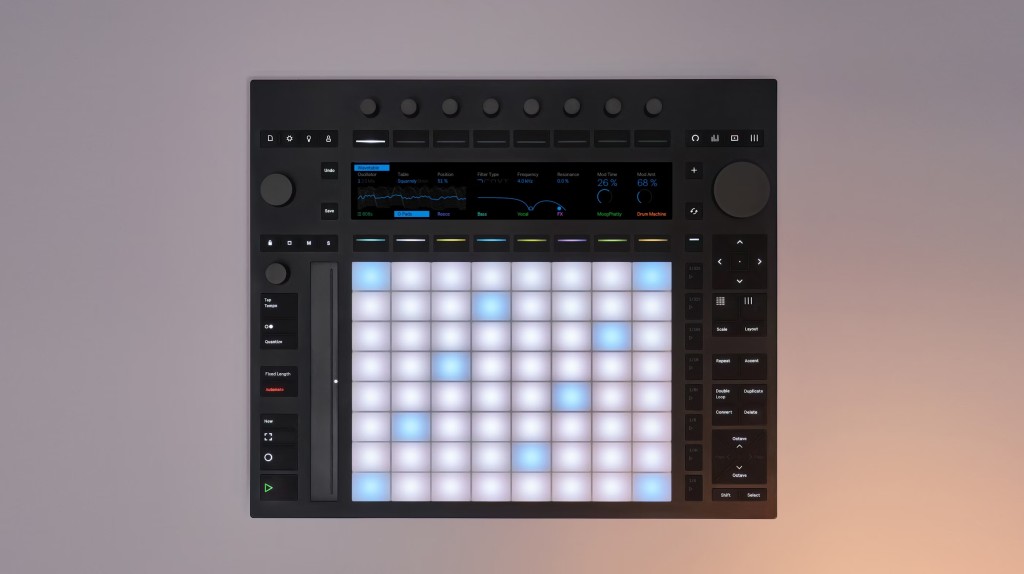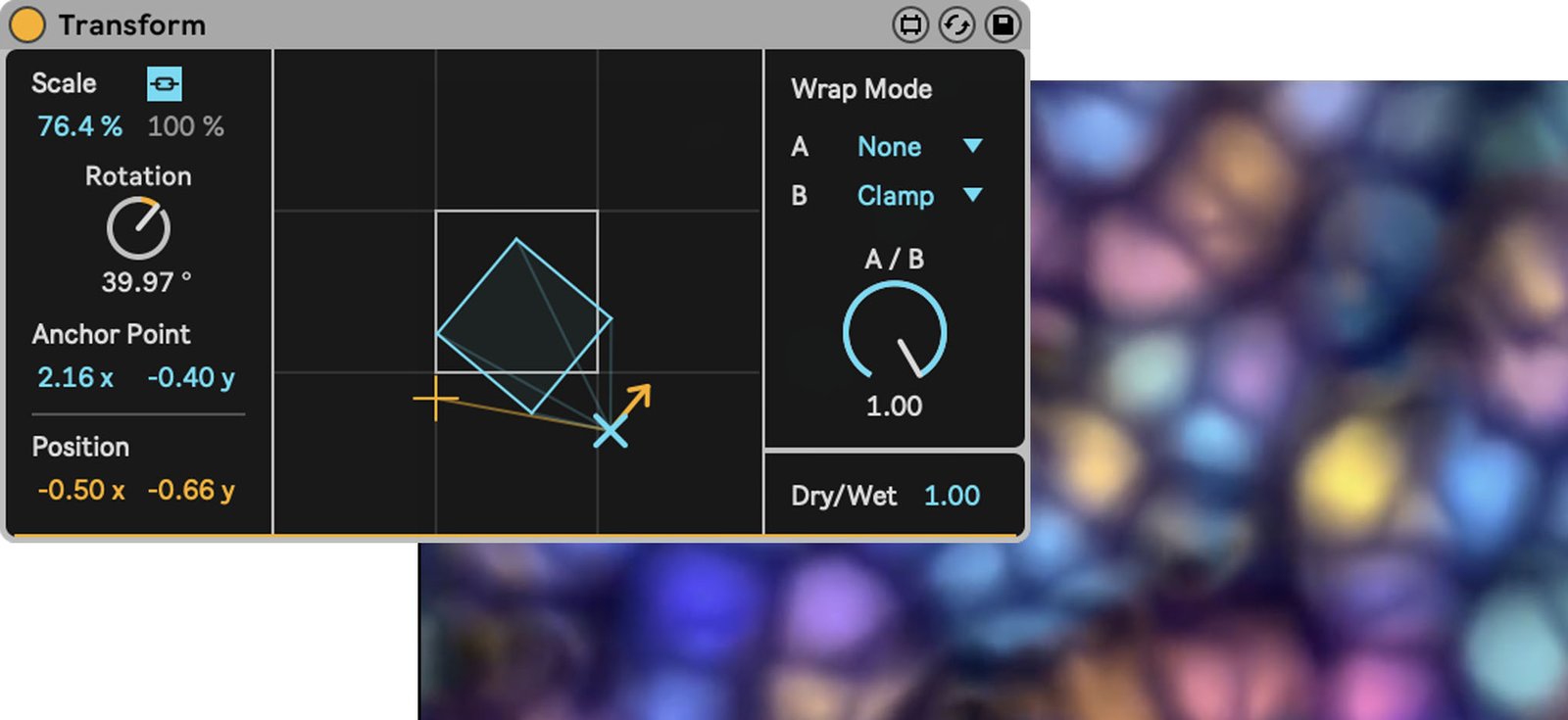One of the big features of Ableton Push is its standalone mode and upgradeability, enabled by the Intel-developed NUC platform. Over the summer, Intel discontinued that platform, raising some questions about where NUC was headed. Now, with Asus officially taking over NUC, here’s a look at the platform and what it could mean for Push 3’s future, with Ableton’s head of hardware weighing in.
First, let’s talk about NUC – that rhymes with “luck” as Asus is quick to remind us, and stands for Next Unit of Computing. A NUC-based board is the guts inside Ableton Push standalone and its Upgrade Kit – with the possibility of further upgradeability for your Push in future. NUC is unique in that it’s a compact platform that nonetheless is designed for massive expandability and performance.
That differs not only from more limited ARM platforms and things like Raspberry Pi but even a lot of past mini PC board form factors. The idea is, NUC has the small form factor of embedded devices and even its lower power consumption, but more of the power and upgrade path you’d associate with desktop devices as far as computation and graphics. Also, it’s got the latest Intel chipset inside – that’s currently a brand-new 13th-generation Intel Core, launched in fall 2022. (That also means you can’t look at just the “i3” part – this is a fast, modern CPU.) The most direct comparison is actually to Apple Silicon – but only Apple can make devices with that.
Right now, there’s no competing hardware that uses anything as powerful as NUC, which is part of why Ableton Push standalone is worth taking seriously. It’s the first standalone device that can really serve as an alternative to your computer.

So, here’s what happened. Intel announced over the summer that they were dumping NUC – even getting rid of their own kit inventory. Shortly after that announcement, Intel announced a license agreement was in the works with Taipei-based electronics giant Asus. There’s reason to think Asus could be even a better steward than Intel: Intel may make Core and the chipset, but Asus is an actual vendor for boards and systems. The agreement is also non-exclusive, meaning other players could enter, too. That combined with the Core architecture seems to me to say this is still a fairly safe bet – certainly for us as individual musician consumers. (I don’t have to run Ableton; just my own studio.) By the way, separate from Ableton, you might even want to mess around with this stuff – see Asus’ Tinker Board announced in August, which gives you a RasPi-like form factor that acts more like a desktop.
The agreement was announced in July, but only became formal and finalized recently, and Asus made it official and public, now with their own NUC site:
https://www.asus.com/us/content/nuc-overview/
Jesse Terry, Ableton’s Head of Hardware, let us know their perspective on this – why they chose NUC, and what the transition may mean.

The Intel NUC Compute Element was the best choice for us to power Push 3 with. While it is by no means cheap, it gives us the right balance of power and cost to get Push to do all the things we want it to do when running standalone, and works with our software architecture. Unlike how a processor’s power is distributed on a laptop, this processor is dedicated solely to Push, which allows it to load all the devices, tracks, warping and everything else that Live has to offer.
We have been in close discussions with Intel since their announcement to exit the NUC business. It has been painful to have to wait to talk to Push users about it, but we weren’t in a place to say anything before ASUS and Intel made their plans official. We are excited it has worked out the way it has, and that Intel and ASUS are helping make the transition seamless. ASUS IoT is the division taking on the future of the NUC Compute Element. This is exciting for us. They are a big enough organization to handle the complexities of the NUC line but also open to our input, as well – we’re already talking with them and look forward to having input on future directions. Not to mention looking into what other interesting technologies they have that we might incorporate into future products.
As it looks now, we will continue with our current processor for the foreseeable future, but we’re testing more powerful processors for possible upgrade potential down the line. This involves heat and power management, and requires work under the hood of each different Compute Element revision. After what we’ve seen with the supply chain chaos during COVID, I wouldn’t make any guarantee about any part availability ever again. But I hold onto my dream of a product that has an extended lifespan, with upgradeable processors in the future. We can’t make any product completely green, but extending the lifespan of the product is where we have the most control, and can have the most impact. This extends to previous products – there are exciting updates coming for Push 2 users soon, as well.
Speaking of longevity, I know many users are concerned about hardware lasting – and we should all talk about that. My Push 2 is still working perfectly, even after banging it around a bit, and so I’m moving that to my flat while the Push 3 stays in the studio, with only cosmetic wear on the side surfaces. But I was curious to ask Jesse about Push 3, as some readers complained about some Push 2 materials aging. Here’s Jesse on that:
Like other hardware companies, we learn and improve as we go. This includes the selection of components, the materials we make our hardware with and aesthetic choices like paint and finish. We evaluate our choices from both durability and sustainability angles. One example is moving to a water-based paint for the coating of Push 3, which ideally lasts longer and has less environmental impact.
Companies aside, I can speak from the perspective of the musician. Having tried the offerings from NI and Akai, standalone mode on Push is the first standalone hardware experience that for me really competes with desktop software. Add the upgradeable NUC platform to the work they’ve done on sensing and the potential future of the grid and the display, and there’s a lot here. I would expect across the industry that a lot of products do continue to look to ARM and even things like FPGA platforms as we get computation in more forms – you’re even seeing that in Eurorack. But NUC as basis of the “Ableton in a box” standalone experience makes sense, so I’m hopeful NUC will benefit from Asus at the reigns. Let’s see if other rival makers step in, too. And yeah, I am completely with Jesse in not making too many predictions after the volatility of the market – there I can speak as a manufacturer.
If you are working with Push standalone and want to share experiences, or you have some questions, let us know.
More on Push and the Upgrade Kit:
Previously:




